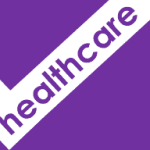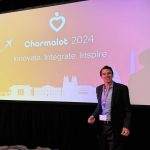Clinician burnout is a growing crisis. In the United States, the most commonly proposed solutions—such as eliminating prior authorization requirements or reducing patient volumes—have not materialized and are unlikely to do so.
For nearly a decade, frustrated and exhausted clinicians have pleaded with healthcare’s most powerful players—insurers, health system CEOs, hospital administrators, etc.—to bring relief to a struggling profession.
Yet, there has been little, if any, improvement. Individual efforts to manage burnout have provided some relief, but the nation’s doctors and nurses are nearing a breaking point. Those who feel battered by an uncaring healthcare system will not find solace among those who benefit from maintaining the status quo.
These words, which I delivered at the third Ending Clinician Burnout Global Summit, were likely difficult for some to hear, but they were honest and necessary. Instead of hoping for medicine’s power players to bring change, healthcare professionals must take the steps needed to force change now.
We all understand the fundamental problems facing U.S. healthcare. This is a nation that spends nearly twice as much per person on medical care as other wealthy countries, yet outcomes like life expectancy and maternal mortality are much worse—and the gap is widening.
Given the many ways in which the U.S. healthcare system is an outlier compared to other wealthy nations, I was surprised by data from the Commonwealth Fund that found burnout is not unique to the United States. Instead, it’s a global issue, with America’s primary care physicians ranking in the middle of the pack in terms of professional satisfaction.
So, rather than blaming burnout on the for-profit healthcare system in the U.S., the government-run NHS in the U.K., or the provincial approach in Canada, healthcare professionals need to recognize the common factor affecting all: the chronic disease epidemic.
These diseases (like hypertension and diabetes) and their complications (heart attacks, strokes, cancer, kidney failure) require clinicians to schedule multiple office visits each year for the rest of a patient’s life. As daily schedules become more packed, the demands on clinicians increase, leading to less time per patient (now averaging 17 minutes). This forces doctors to cut corners, leaving them feeling at the end of the day that they didn’t do their best, which causes moral injury and adds to their fatigue.
In my talk, I outlined a five-step solution:
- Focus on Chronic Disease Prevention and Effective Management: CDC data shows that better control of conditions like diabetes and hypertension could reduce heart attacks, strokes, cancer and kidney failure by 30-50%, diminishing daily demands on clinicians and saving lives.
- Employ Wearable Monitors: These low-cost, highly reliable devices can measure blood pressure, glucose and oxygen levels daily (between office visits that are spread months apart), allowing for more rapid control of chronic medical problems.
- Embrace Generative AI (GenAI): This technology can analyze data from wearable devices, inform patients when their chronic diseases are well managed and instruct them to seek additional medical help when treatments aren’t effective. This approach can eliminate unnecessary visits for patients who are doing well, freeing up time for those who need a clinical attention the most.
- Invest in Lifestyle Medicine: The best way to treat chronic disease is to prevent it. Assisted by GenAI, lifestyle health coaches can help patients eat healthier, exercise regularly and reduce stress. For many, this will eliminate their chronic disease, and for all, it will make control easier.
- Shift From Pay-for-Volume To Capitation Models: Reducing the number of patients seen per day decreases clinician income under a fee-for-service model. Shifting to a capitation model, paid at the delivery (not insurance) system level, allows both patients and providers to benefit when chronic diseases are well managed and complications are avoided. Without this shift, improvements in public health will stall and the burnout crisis will persist.
If you missed the summit, I encourage you to check out the replay (coming soon) and dive deeper into these solutions by reading my book, ChatGPT, MD, where I explore these topics in greater depth (all profits from my books go to Doctors Without Borders).
A heartfelt thank you to Jonathan Fisher and Kelcey Trefethen for organizing this important event and to the other inspiring speakers who shared their insights. The Ending Clinician Burnout Global Summit—and the community of same name on LinkedIn—continues to drive meaningful discussions and offer practical solutions for healthcare.






